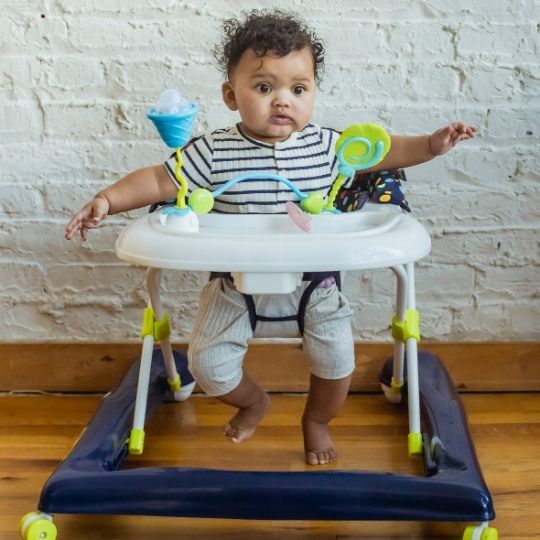
Baby Walker Care: A Comprehensive Guide to Safety and Maintenance
Introduction
Baby walkers are a popular tool for parents to help their little ones develop motor skills and explore their surroundings. However, it’s crucial to prioritize safety and proper maintenance to ensure a positive and injury-free experience for your child. This comprehensive guide will provide you with all the essential information you need to know about baby walker care, including safety precautions, cleaning and maintenance tips, and troubleshooting common issues.
Safety Precautions
- Supervise your child at all times: Never leave your baby unattended in a walker. Constant supervision is essential to prevent accidents.
- Use on flat, stable surfaces: Walkers should only be used on level and non-slippery surfaces. Avoid using them on stairs, uneven floors, or near potential hazards.
- Secure doorways and stairs: Install baby gates or barriers to block access to stairs and other dangerous areas.
- Remove tripping hazards: Clear the area where your baby will be using the walker of any obstacles or loose objects that could cause them to trip or fall.
- Limit walker use: Experts recommend limiting walker use to 30 minutes per day to prevent overexertion and potential developmental issues.
- Choose a walker with safety features: Look for walkers with a wide base for stability, locking wheels, and a sturdy frame. Avoid walkers with sharp edges or protruding parts.
Cleaning and Maintenance
- Clean regularly: Wipe down the walker with a mild detergent and warm water on a regular basis. Pay special attention to the seat, tray, and any other areas that come into contact with your baby.
- Disinfect frequently: Use a disinfectant solution to clean the walker thoroughly at least once a week. This is especially important during cold and flu season.
- Inspect regularly: Check the walker for any signs of damage or wear and tear, such as loose screws, torn fabric, or broken wheels. Repair or replace any damaged parts immediately.
- Lubricate moving parts: If your walker has any moving parts, such as wheels or hinges, lubricate them with a light oil or grease to ensure smooth operation.
- Store properly: When not in use, store the walker in a dry, clean place out of reach of children.
Troubleshooting Common Issues
- Wheels not rolling smoothly: Check for any debris or hair wrapped around the wheels. Clean the wheels and lubricate them if necessary.
- Walker tipping over: Ensure that the walker is on a flat, stable surface. Check the wheels to make sure they are locked and not worn out.
- Seat fabric tearing: If the seat fabric becomes torn, replace it immediately to prevent further damage or injury to your baby.
- Tray not staying in place: Tighten any screws or bolts that may have loosened, securing the tray firmly to the walker.
- Walker squeaking: Lubricate any moving parts, such as wheels or hinges, to eliminate squeaking noises.
Additional Tips
- Encourage crawling: While walkers can be helpful for developing motor skills, it’s important to encourage your baby to crawl as well. Crawling helps strengthen muscles and improve coordination.
- Use a walker as a transition tool: Walkers should not be used as a substitute for floor play or other activities that promote physical development.
- Consider your baby’s age and abilities: Choose a walker that is appropriate for your baby’s age, weight, and developmental stage.
- Consult with your pediatrician: If you have any concerns about your baby’s use of a walker, consult with your pediatrician for guidance.
Conclusion
Baby walkers can be a valuable tool for helping your little one explore their surroundings and develop motor skills. However, it’s essential to prioritize safety and proper maintenance to ensure a positive and injury-free experience. By following the guidelines outlined in this comprehensive guide, you can provide your baby with a safe and enjoyable environment in which to learn and grow. Remember to supervise your child at all times, clean and maintain the walker regularly, and troubleshoot any issues promptly. With proper care, your baby walker can be a safe and beneficial addition to your parenting journey.
